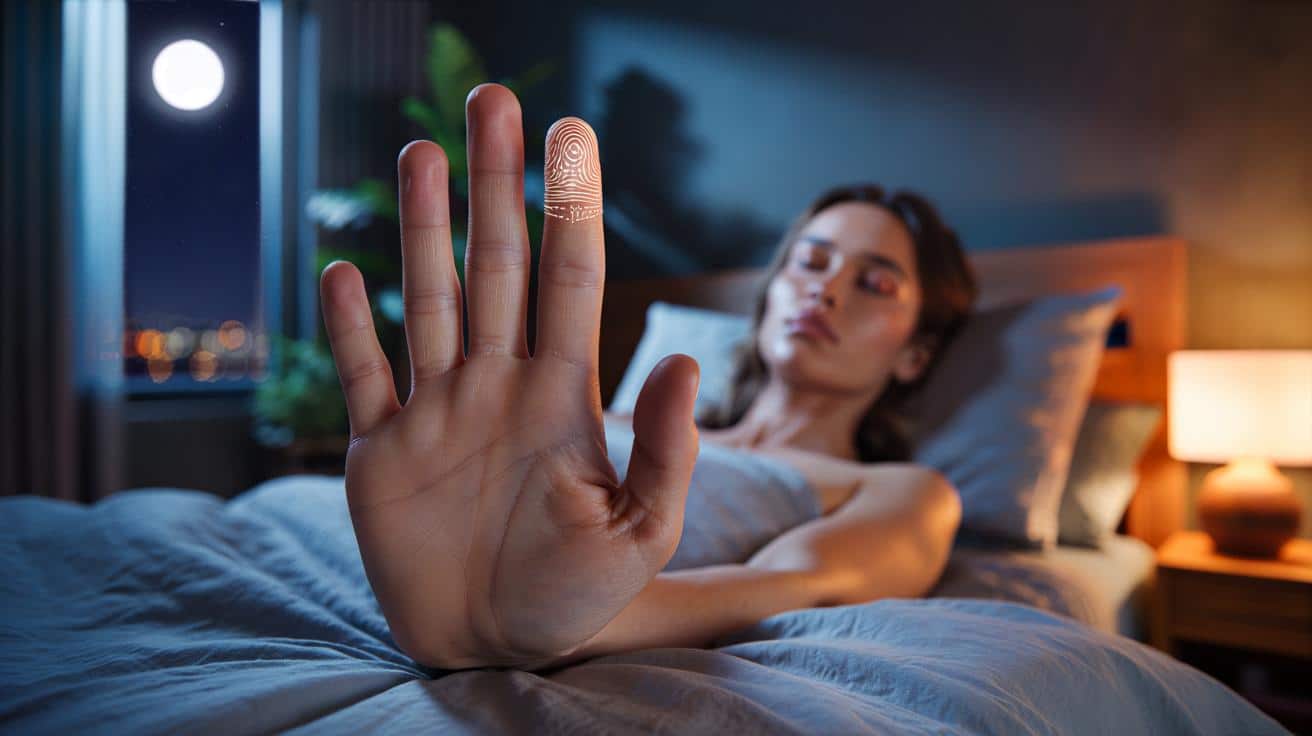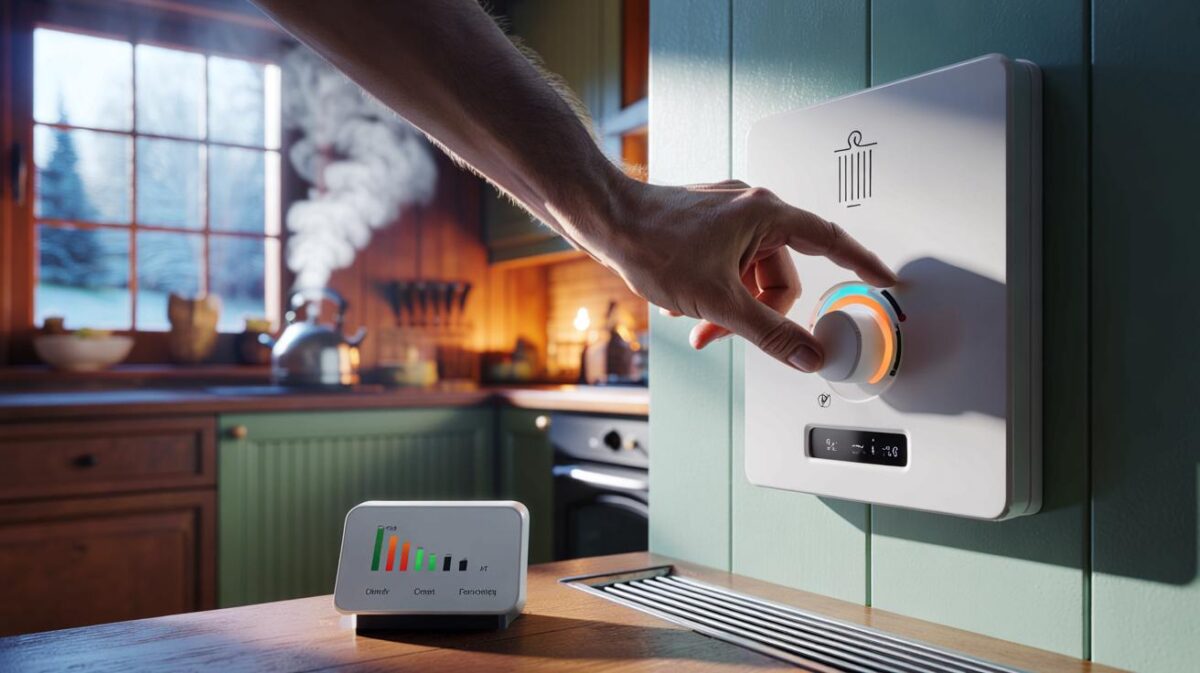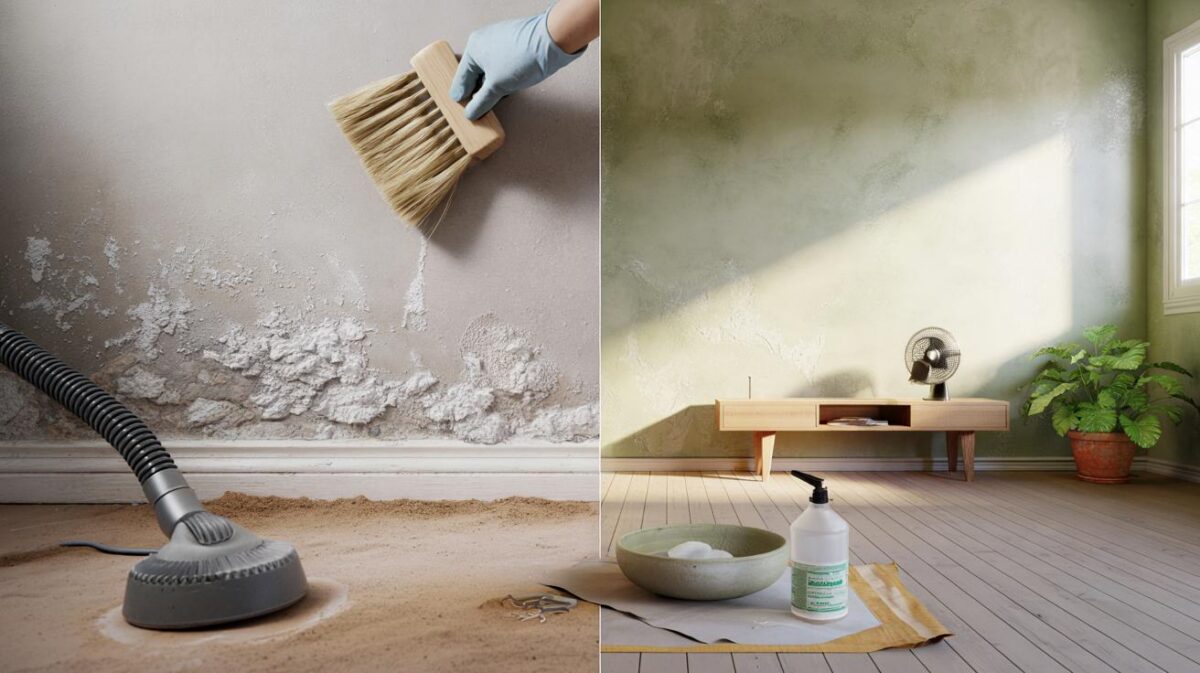You’re tired, the to-do list won’t stop pacing, and the ceiling has learned your name. Your phone is glowing like a small lighthouse. Then someone mentions a trick that lives in your hand.
A late bus sighed, a fox skittered past a bin, my brain tried to rewrite the entire week. The clock stared. I lay there, wrists heavy on the duvet, feeling the familiar loop of worry warming up for another lap.
It was a friend’s text that shifted the mood: “Trace your hand. Breathe.” Honestly, I almost laughed. Hands? Breathing? I’ve downloaded apps with orchestras and moon graphics for less. Still, I was awake and a little desperate. I turned the screen face-down and lifted my left hand to the soft glow of the curtains.
I put my right index finger at the base of my thumb and started to move. Up as I breathed in, down as I breathed out, slow as a lift at night. The room didn’t change. Something else did. I reached for my hand.
What finger breathing is — and why it works
Finger breathing is a simple mash-up: steady breath plus a tactile track. You trace the outline of your hand with a finger, timing each stroke to your inhale and exhale. It’s a counting aid you can feel, not just think.
We’ve all had that moment when you’re tired yet wired, eyes sandy, mind sprinting in tiny circles. Surveys in the UK suggest around one in three adults deals with insomnia-type symptoms at some point. A Year 8 teacher in Leeds told me she uses a “five-finger lap” with her pupils before tests, and then kept it for bedtime during the longest term of her life.
Why it helps makes lovely, ordinary sense. Touch gives your brain a clear, gentle job; breath slows your heart and nudges the nervous system toward rest. The tracing anchors attention in a small, repeating loop, like watching waves without the cold. This isn’t magic — it’s mechanics.
How to do finger breathing tonight
Sit or lie down. Hold up one hand, fingers spread, and place the index finger of your other hand at the base of your thumb. Inhale slowly through your nose as you trace up the outside edge of your thumb; exhale as you trace down the inside edge. Repeat for each finger, moving up on the inhale, down on the exhale, until you’ve outlined the whole hand.
Keep the breath soft and quiet, like you’re fogging a mirror from far away. Aim for five slow rounds per finger, or one trace per breath if that feels easier. Let your shoulders drop. If you get to your little finger and still feel buzzy, switch hands and go again. **Five minutes, one hand, zero apps.**
A few things help it land without strain. Breathe through the nose if you can, with the jaw easy and tongue resting on the roof of your mouth. Let the exhale be a touch longer than the inhale — that’s where the calm happens. Let’s be honest: nobody does that every day. Just do what you can. **Small, steady and kind beats perfect.**
People like the way this has a rhythm you can trust. It makes the invisible feel solid, and that’s oddly reassuring at midnight.
“The body loves a rhythm it can predict. Your fingers just make the rhythm visible.”
- Start with the thumb and move finger by finger.
- Inhale up the side, exhale down the other.
- Keep your touch feather-light; it’s a guide, not a test.
- If your mind wanders, simply notice, and return to the ridge of your skin.
- Two laps are fine. Three if the day was loud.
What stays with you when the room finally quiets
Here’s the lovely part: finger breathing shrinks the night back to a size you can hold. You’re not fixing your life at 2am; you’re tracing one small hill and one small valley at a time. **Real, quick, doable.** And when sleep arrives, it feels earned rather than chased, which is quietly empowering. You may share it with a partner who tosses, or teach it to a child who dreads the dark, and there’s a shared exhale that’s bigger than the room.
| Point clé | Détail | Intérêt pour le lecteur |
|---|---|---|
| Breath meets touch | Trace each finger as you inhale and exhale | Gives the mind a tangible anchor |
| Slow exhale wins | Make out-breath slightly longer than in-breath | Activates the body’s rest-and-digest response |
| Five minutes is enough | One or two laps of the hand in bed | Practical, screen-free, works on a weeknight |
FAQ :
- What exactly is finger breathing?A mindfulness technique where you trace the outline of your hand in time with your breathing to calm the nervous system.
- Can it really help me fall asleep in five minutes?Many people drift off within a few minutes, especially after one or two laps. Results vary, but the calming effect is fast.
- Do I need any equipment or an app?No. It’s fully portable and works in the dark. Your hand is the guide and the metronome.
- Is it safe for kids or during pregnancy?Yes, it’s a gentle breathing-and-touch practice, not a medical treatment. If you have specific health concerns, talk to a professional.
- What if my mind keeps racing?That’s normal. Notice the thoughts without wrestling them and return your attention to the fingertip moving along the skin.










Out by the ring finger—wow.
Isn’t this just classic paced breathing with a gimmick? Genuine question—what makes the tactile part more effective than counting in your head? I’ve used 4-7-8 breathing with mixed results. Curious if there’s any research comparing touch + breath vs breath alone, or if it’s mostly anecdote. Not dismissing it, just trying to understand the why.